The towns of Burqin and Zababdeh and the ten towns and villages in Marj ben Amer, the large fertile plain in the Jenin area, are of inherent beauty and distinction and blessed with an abundance of natural attractions and exquisite landscapes. These are enjoyed by the 500 million birds that visit this glorious countryside every year on their migration routes over Palestine. Having visited these villages, I feel compelled to invite you, too. Why shouldn’t you visit them as well?
Undeterred by the frequently overwhelming Israeli presence in the form of checkpoints, army camps, and invasive settlement blocks that defy the accumulation of thousands of years of cultural and natural history, I have researched and delved into the sagas that have contributed to the creation of the distinct and unique atmospheres you can find in these villages. I have been amazed by the individuality and exclusivity that is always eager to surface and demand its rightful position above the throne of all the other values, resources, and capacities that each village or cluster of villages seems to share with other Palestinian villages and towns. All a visitor needs to do is ask, and all that local inhabitants need to do is set their feelings and souls free to glide through time and above the landscape – just like the birds in search of a safe haven for their newborns. Stirred by the memories of family gatherings with grandparents, as we listened to their stories while munching on fresh fruits, zaatar manakeesh, or olive-oil-soaked labaneh balls, we forever hold in our hearts powerful childhood reminiscences and beautiful sensations that contribute to our attachment to our villages and neighborhoods.
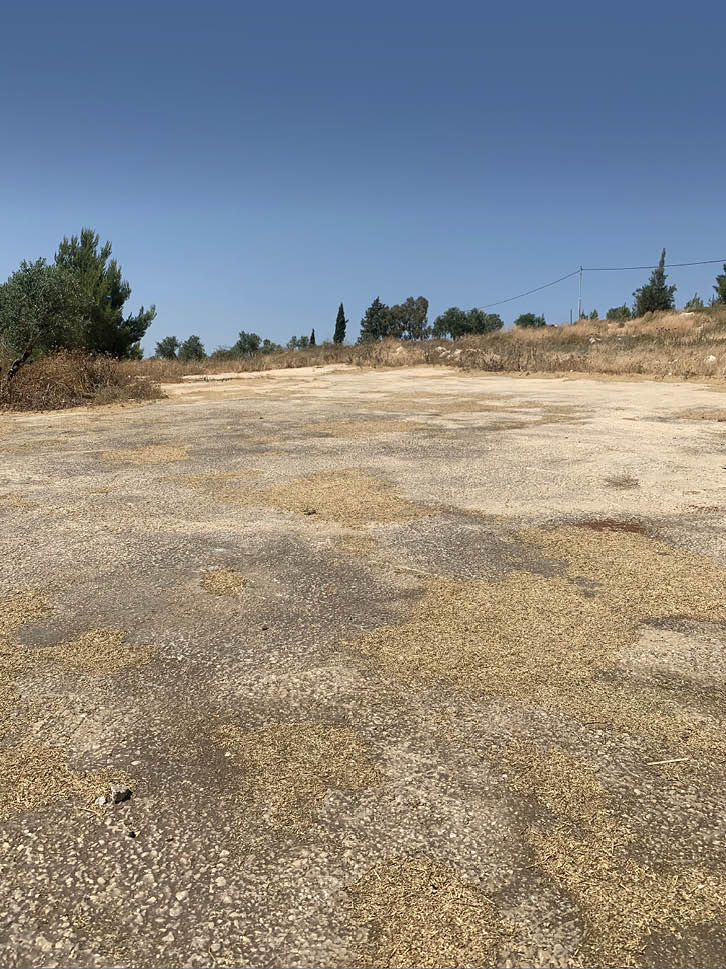
The methodology I apply while searching for the uniqueness of each village loosely depends on finding two main values for each village. The first is tangible, and its purpose is to shed light on the village’s specific sites, venues, buildings, monuments, shrines, historic centers, handcrafts, agriculture, and flora and fauna. The intangible, on the other hand, deals with other cultural heritage components such as stories, memories, songs, and folklore. Once these values are identified, they are combined to form a dramatic title for the concerned village. I treat this like the title of a book, poem, or film, a title that is easy to remember, a title that can be heard both in the mind and in the heart. It becomes the compass for a developmental strategy, provided that the village or town leadership is willing to adopt it, protect it, and hand it over intact for the next generations.
In the northern West Bank, the towns of Burqin and Zababdeh and the towns and villages of Marj Ben Amer offer beautiful fauna and flora and great hospitality.
Burqin is famous for the its church, where Jesus performed the miracle of healing the lepers. The village also has a little shrine, called maqam Sheikh Sabe’, that is situated on top of a hill that offers breathtaking views of the surrounding villages and towards Nazareth and Mount Tabor. Like other villages in the region, Burqin is famous for agriculture. But it is unique because it has a well that provides the village with its water needs. It is also home to Canaan Fair Trade, a company famous worldwide for its high-quality olive oil products. Numerous discussions with village members, municipality employees, the women’s organization, and Canaan Fair Trade company led to the choice of the village title: Bir an-Nour (Well of Light). “Well” refers to the leper’s cave or well and also to the town’s water well. “Light” refers to the miracle, the abundance of agricultural products, and the commanding views from the Sheikh Sabe’ hill. The municipality and Rozana Association for Rural Tourism have recently joined forces to transform the Sheikh Sabe’ shrine into a beautiful public park. Hence, the title Bir an-Nour aspires to represent the town’s individuality as innovatively and profoundly as possible. The municipality might seek creative ways to find interesting interpretations for this title in their urban plans, business feasibility studies, tourism portfolios, school curriculums, artisans’ productions, and the activities of their youth and women.
No doubt, among the first remarkable experiences in this region are the hospitality and sense of graciousness and generosity that the people of this land offer and provide for the perceptive guest.
The village of Zababdeh is not a particularly ancient town. According to its elders, it began in the 1780s, on top of a deserted Byzantine town, as evident from the mosaics and columns that exist underneath the convent of the Rosary Sisters and other buildings in and around the historical center. Interesting are the tunnels that might have served as entrances to the old town. They still exist as a unique characteristic of Zababdeh, an agricultural town that has recently developed to serve the nearby American University of Jenin. This does not seem to be a successful endeavor, however, as a lot of investment is taking place in closer proximity to the university, providing students with quite competitive, affordable housing and services. Overlooking the hills of Zababdeh, there is a ruined khirbeh. The name and story of the khirbeh offer Zababdeh an attractive narrative to adopt and build upon. The image is indeed striking, and the possible interpretation seems like a perfect fit for the town. The hill is named Khirbet as-Sab’een. In the first instance it can be heard as sab’een (seventy), but according to the local narrative, it is Sab’ain (with a softer “e” sound), meaning two lions. When I heard the story, I immediately thought that the two lions could represent and explain the presence of the Christian and Muslim communities who have been sharing the village for more than two hundred years. Hence, the suggested title for the village is Saradeeb as-Sab’ain, which means the Tunnels of the Two Lions. As may be obvious, the first word represents the historical and archeological value that makes the village unique, and the second tells the interesting story of its community. This story simultaneously sheds light on the dynamics of life as it has existed in Palestine for many generations and forged its identities, heritage and traditions.
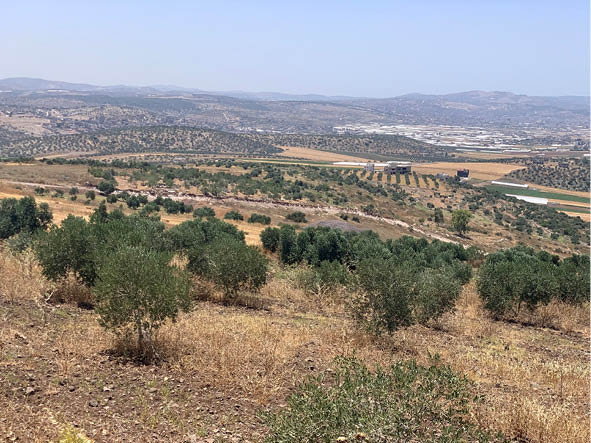
Driving to and through the villages of Marj Ben Amer is a source of joy and elation for the heart, while the undeniable beauty of the surrounding landscape and the spans of its agricultural fields only extend the sense of hospitality and graciousness of its welcoming communities. The municipality of Marj Ben Amer represents ten unique villages. Even though at first glance they might look similar, there is, in fact, a lot of individuality and distinctiveness to be discovered. For the sake of this article, I will describe and interpret the specific values of some of them, but discerning readers are invited to visit and enjoy the endeavor of searching on their own.
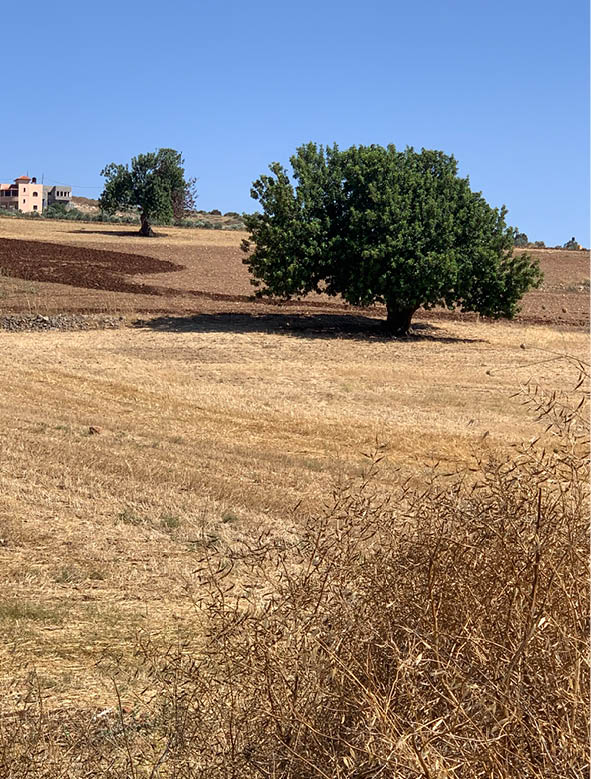
With respect to the village of Deir Ghazaleh, famous for the grape or carob presses that spread along its hills, I suggested the name Madabes al-Qamar. Madabes, plural for madbaseh, can be found in the village as squares engraved in stone that serve as fruit juicers that contain a collection hole for the juice. They indicate the historical value and identity of this town, as the story goes that there was once a carob forest on the village hills that was destroyed during the Ottoman period. The villagers used it as a source for the carob juice and molasses that they made. Today, near some of the madabes people treat wheat, which is roasted while still green to make freekeh. The bayder (workspace) to do this consists of a cemented space of about 100 to 200 square meters and tends to be located on the hills. The villagers collect the grain, rub it, and then roast it to prepare freekeh that is then sold in the market. Al-Qamar means moon, and the name derives from a story I was told by Abu Ghaleb, the mayor of Marj Ben Amer and village council president of Deir Ghazaleh. According to the astronomical foundation NOVA, Deir Ghazaleh was chosen as the best place to absorb light pollution because of its natural landscape and vegetation. Hence the town’s title Madabes al-Qamar. An alternative name based on the town’s interest in horse raising and equestrian sports is Madabes al-Fursan (knights).
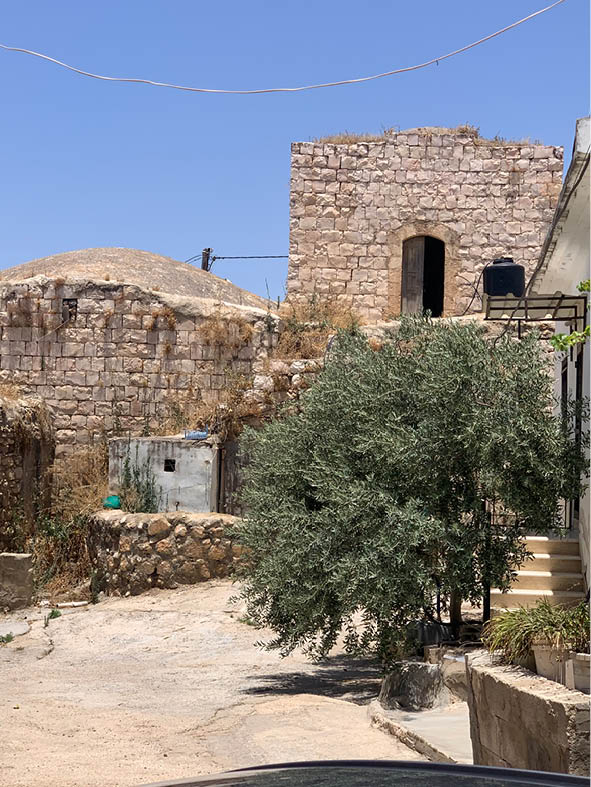
Faqoua is another Marj Ben Amer village. It has a rich history, and a large portion of its lands was taken by Israel during the 1948 war. Indeed, there are many stories to discover and explore. The town’s interest in cactus trees, however, was very evident to everyone I spoke to. So, I thought it should simply become Um as-Saber, which means the mother of the cactus tree. The numerous stories of the steadfastness of its residents and their struggle and defense against the Zionist gangs and the British army is represented in the qualities of the cactus tree: a tough plant that naturally protects the borders of the fields, while its sweet and delicious fruit is representative of the kind, active, and hard-working community of Faqoua that decided to return to their homes even after they had been destroyed during the Nakba.
Locals will readily share numerous stories of pride and belonging, recounting their historical roots and cultural heritage identities as well as the achievements of their sons and daughters in and outside Palestine, despite periods of hardships and struggle.
The town of Al-Jalameh is famous for zajal recitation and singing. Zajal is a form of folklore based on the improvisation of verses in response to those of another poet, as they compete in commenting on certain selected topics. For me, zajal is Palestine’s traditional rap music. Almost every home in Al-Jalameh has a zajal poet. As Al-Jalameh is famous for its agricultural products, such as pumpkins, the suggested title for the village is Anaqeed az-Zajal, the zajal clusters, which refers to the fruits that hang down from the branches of their trees.
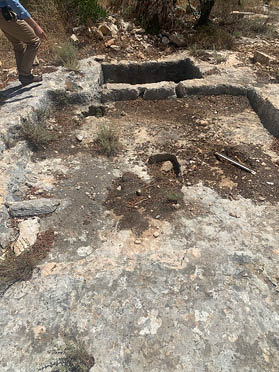
To describe the other villages of Marj Ben Amer would require more space than available here. Therefore, I hope you will eagerly await a future article.
Article photos courtesy of Raed Saadeh.


